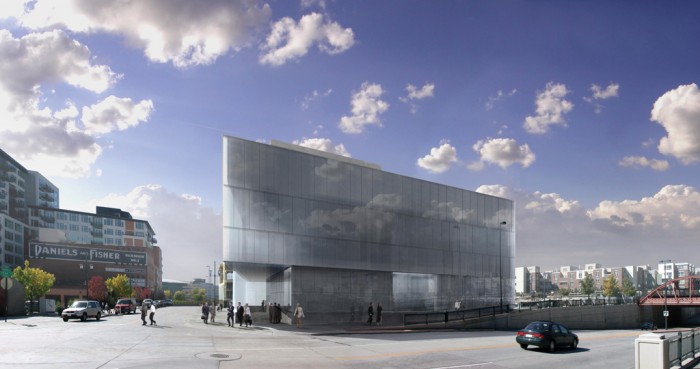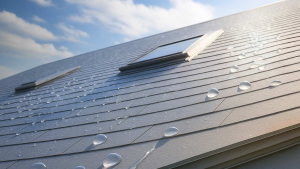
David Adjaye is a force to be reckoned with… A "starchitect" with an artistic vision, his London-based studio is winning some of the world's most prestigious commissions. The suave 36-year-old runs with the glampack, is feted by the critics, loved by the art world and even has his own TV show. No wonder, he has joked in the British press, his rivals want to kill him
Home is where the art is, in the case of David Adjaye. He creates residential projects that could easily double as gallery pieces. And he creates art centres - like the Museum of Contemporary Art/Denver, the Bernie Grant Performing Arts Centre and the IVA/Autograph arts building in London - that make people wish they could move in… One of the main emotive triggers in his work is his adventurous and almost conceptual use of materials. Don't be surprised to see aluminium aeroplane cladding winging it through one of his interiors, or tacky chipboard re-tread as a luxury finish. His spectacular knack of showcasing light tends to flip the switch in the public brain. Design Indaba magazine last spoke to David over a year ago, and we want to find out what this artistic architect - due to speak at the 9th Design Indaba Conference - has been up to since then.
Your office finished the Nobel Peace Center in Oslo, Norway, in June 2005. It's the kind of building that many architects would consider to be - if you'll forgive the cliché - the "commission of a lifetime." How did you negotiate the brief? What did you hope to achieve with this structure and what are the salient features that allowed you to accomplish this?
The brief was established by the Nobel who were very clear about what they didn't want. The Nobel is recognised for giving the peace medal but central to this discourse is to understand conflict. An understanding of this thesis is what drove the design strategy for this project. It is a series of negotiations, which sometimes invite or question the user.
You were involved in the third annual Frieze Art Fair that was held in London this October. How so?
The Frieze event and structure is something I was involved in since the beginning. My office has been key in developing the systemic physical parameters of the fair. This year was the last year that we would be involved and we have since been involved in choosing a new young architect to carry on and develop the project we have started - but in a new way.
The "artistry" of your buildings is often remarked upon. London's Whitechapel Art Gallery is exhibiting your first solo show, which will focus on your public buildings, in January 2006. Where do architecture and fine art intersect? Where is the point at which they depart?
We are always trying to find, like surgeons, the exact position and point where art and architecture intercept and this for me is like searching for the Holy Grail. This idea does not exist. It is essentially about a collaboration of creative minds and a relinquishing of egos to achieve a common goal.
Thames & Hudson has just published your first book David Adjaye Houses: Recycling, Reconfiguring, Rebuilding. Congrats. What is the focus or core idea of this publication?
Houses presents a serial scenario of houses in London. It explores issues that are inherent in most post-industrial cities and presents a new paradigm about the potential of the private realm.
"Green" architecture and "eco" buildings. What's your take?
We all have to be involved; we all have to take this seriously but mustn't become tokenistic and gestural for the sake of ticking boxes.
In this issue of Design Indaba magazine, we're running a piece on African design and what it may have become had colonialism never happened. Do you have any opinions on the subject?
This is too romantic for me to deal with; I prefer to work with what exists.
You were born in Dar-Es-Salaam, Tanzania, and you studied at the Royal College of Art. You live and work in London. Despite this, would you consider youself to be an "African designer"? Is there such a creature in today's world? And if so, what is it that this continent brings to your work?
I guess I am a sort of product of a new global paradigm. But essentially and genetically I feel like an African designer, in the sense that my philosophical and creative inspiration springs from the rich heritage of the continent.
It's not often that someone combines "starchitect" status with a celeb profile. But you've managed to do just that. You're recognised as one of the UK's leading architects, plus you're a BBC TV and radio presenter. Do you see any relation between the public face you present in your personal capacity and the frontage that your buildings show to the world? Do they operate in the same principle?
For me architecture is no longer an exclusive club hidden from the world. It has to engage very directly with culture and people and I don't know anyone else that can perform this role apart from architects. So I think it is important that architects speak to lay people so that their visual understanding of the built environment can also grow in order that they can participate in and understand the evolving nature of the built environment.
Visit www.adjaye.com



